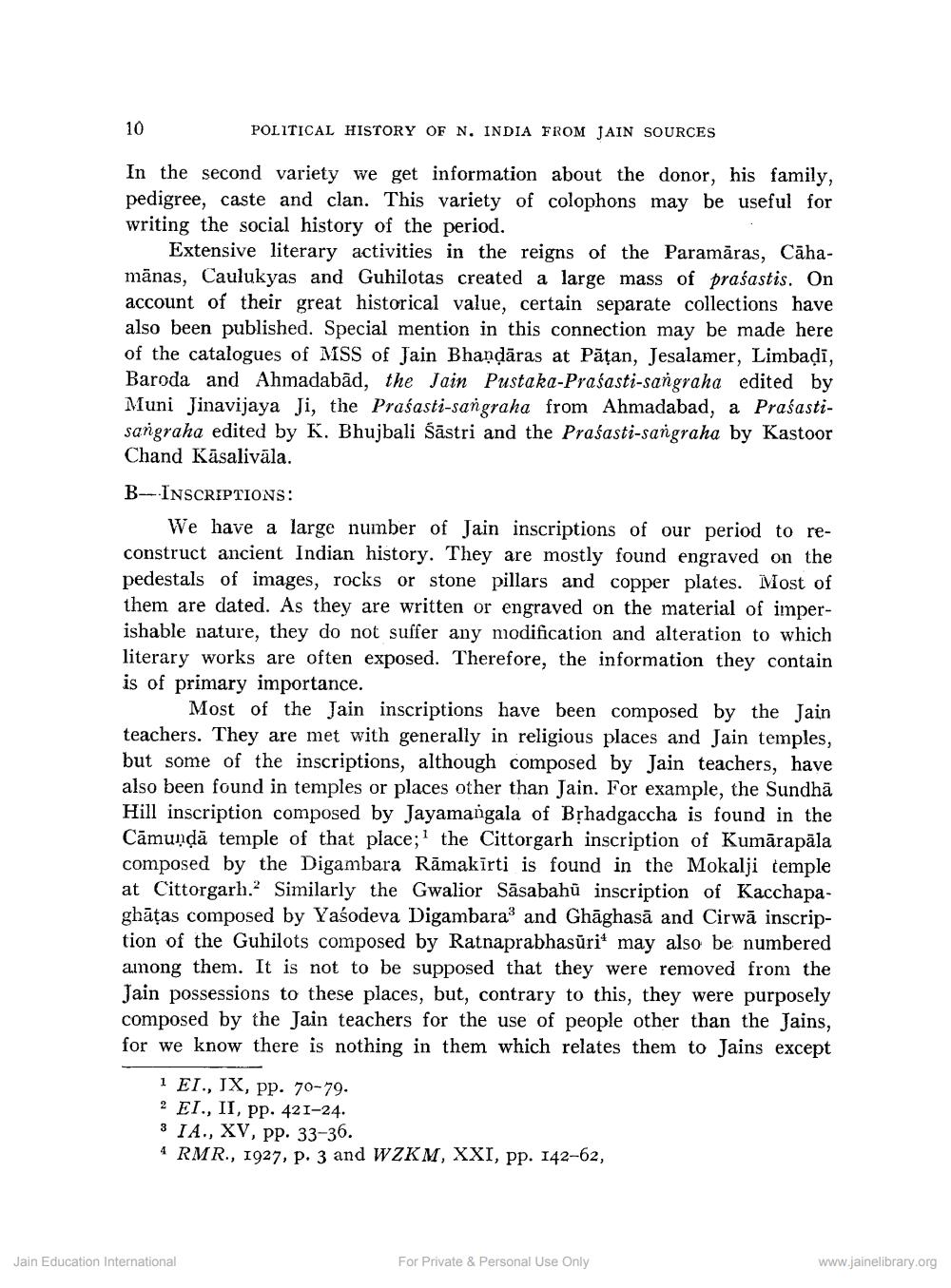________________
10
POLITICAL HISTORY OF N. INDIA FROM JAIN SOURCES
In the second variety we get information about the donor, his family, pedigree, caste and clan. This variety of colophons may be useful for writing the social history of the period.
Extensive literary activities in the reigns of the Paramāras, Cāhamänas, Caulukyas and Guhilotas created a large mass of praśastis. On account of their great historical value, certain separate collections have also been published. Special mention in this connection may be made here of the catalogues of MSS of Jain Bhandāras at Pāțan, Jesalamer, Limbadi, Baroda and Ahmadabad, the Jain Pustaka-Prasasti-sangraha edited by Muni Jinavijaya Ji, the Prasasti-sangraha from Ahmadabad, a Prasastisangraha edited by K. Bhujbali Šāstri and the Praśasti-sangraha by Kastoor Chand Kāsalivāla. B-INSCRIPTIONS:
We have a large number of Jain inscriptions of our period to reconstruct ancient Indian history. They are mostly found engraved on the pedestals of images, rocks or stone pillars and copper plates. Most of them are dated. As they are written or engraved on the material of imperishable nature, they do not suffer any modification and alteration to which literary works are often exposed. Therefore, the information they contain is of primary importance.
Most of the Jain inscriptions have been composed by the Jain teachers. They are met with generally in religious places and Jain temples, but some of the inscriptions, although composed by Jain teachers, have also been found in temples or places other than Jain. For example, the Sundhā Hill inscription composed by Jayamangala of Brhadgaccha is found in the Cāmundā temple of that place;' the Cittorgarh inscription of Kumārapāla composed by the Digambara Rāmakīrti is found in the Mokalji temple at Cittorgarh.? Similarly the Gwalior Sāsabahů inscription of Kacchapaghātas composed by Yaśodeva Digambara3 and Ghāghasā and Cirwā inscription of the Guhilots composed by Ratnaprabhasūrit may also be numbered among them. It is not to be supposed that they were removed from the Jain possessions to these places, but, contrary to this, they were purposely composed by the Jain teachers for the use of people other than the Jains, for we know there is nothing in them which relates them to Jains except
1 EI, IX, pp. 70-79. 2 EI., II, pp. 421-24. 3 IA., XV, pp. 33-36. * RMR., 1927, p. 3 and WZKM, XXI, pp. 142-62,
Jain Education International
For Private & Personal Use Only
www.jainelibrary.org




